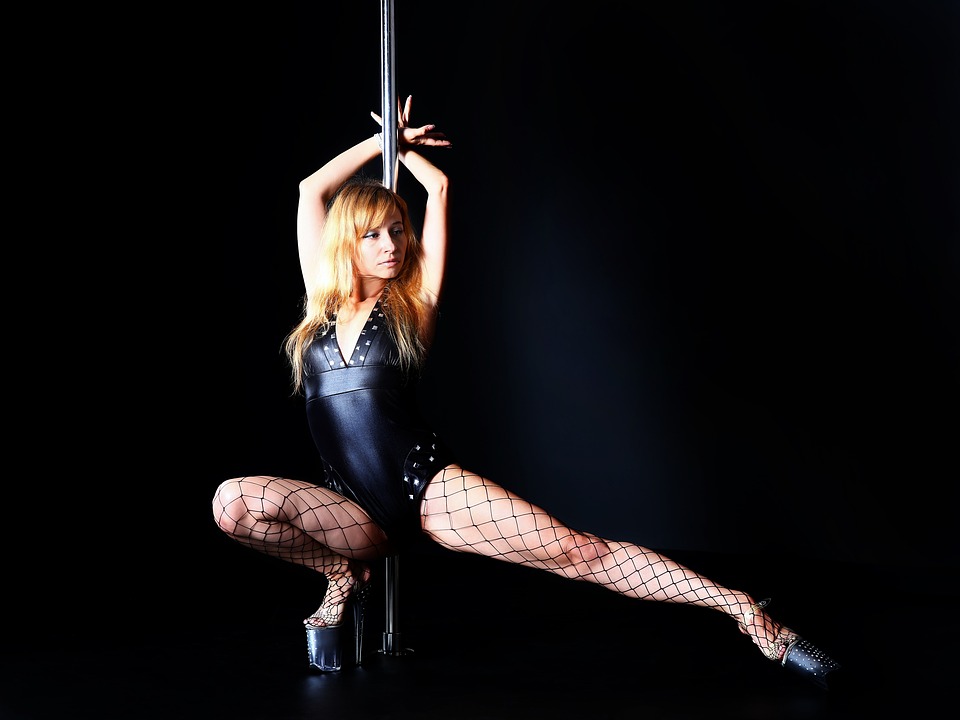
Summary
Welcome » Welcome » Exercises to improve » Dance therapy: When movements help healing
Dance therapy: When movements help healing
For millennia, dance has been used as a form of expression artistic and communication. However, beyond its entertaining and aesthetic side, dance is a powerful tool to lead towards the path of healing, giving rise to what is called dance therapy.
Summary
How was dance therapy born?
Dance has always been linked to the essence of humanity. Over time, it has played several important roles, whether in celebrations, rituals or cultural stories. Its healing power eventually came to life in the form of dance therapy in our contemporary world. In this article, we will explore its origins, its principles, its effectiveness in combating shyness and its benefits.
His origin
The beginnings of dance therapy date back thousands of years. Some evidence has been found that movement can influence mental and physical health. Particularly in ancient societies where ritual dances were associated with the healing among the Greeks, Romans, Indians and even indigenous peoples. Indeed, they assumed that dance was capable of restore the balance, cure diseases And calm the spirits.
Later, in ancient Egypt, dance was harnessed to invoke healing deities and enhance the healing power of priests. Furthermore, the Egyptians were not the only ones to believe that dancing promoted recovery. Indeed, the Greeks believed that body and mind were intrinsically linked and that dance was a way to maintain physical and emotional health.
The emergence of dance therapy in the 20th century
The concept of dance therapy took shape in the 20th century thanks to the American dancer and choreographer Isadora Duncan as she focused on emotional expression through dance. However, it is Marion Chace who develops the foundations of contemporary dance therapy. Her expertise as a psychoanalyst and dancer allowed her to collaborate with psychiatrists to integrate dance into psychiatric treatments.

The pillars of dance therapy
Dance therapy allows you tounite body and mind. But for this operation to be carried out, several factors come into account. It is by combining the elements of dance with the principles of therapy that individuals can explore their emotions. So, here are the basics behind dance therapy.
Emotional expression through movements
The body is a vehicle of expression where each movement, each gesture, each posture allows you to transmit emotions more or less intense. Which can be limited in verbal communication due to the difficulty in translating complex sensations, where body language is universal. Indeed, dance is a tool For reveal And explore THE emotions.
Then, dancing can be a good solution for a emotional release. It may happen that you have repressed emotions who create tphysical and mental feelings. So you can let your body respond naturally to emotions and feelings like anger, joy, sadness or fear. By letting it express itself, you can feel a relief contributing to your well-being.
Emotional exploration
Additionally, dance therapy encourages emotional exploration in depth. It encourages you to dive deep within yourself so that you can identify And express your buried emotions. But through movement, they can be felt And accepted.
Furthermore, expressing yourself through movement in a therapeutic context enhances empowerment and self-expression. Indeed, participants have control over their movements, so they can communicate their personal experiences and their emotions in a way authentic. Autonomy helps strengthen self-confidence.
Finally, dance therapy helps to awaken emotions And thoughts Who resident In the unconscious. Some times, movements spontaneous And intuitive reveal unsuspected facets of oneself. This exploration can lead to a deep self-understanding and pave the way for resolution of internal conflicts or past trauma.
Connection between body and mind
This discipline unites these two dimensions through movement, advocating that the body And the mind are not distinct identities but identities interdependent. In this sense, dance appears as a bridge between the physical world and the inner world of the spirit. Within the dance, each movement to one emotional and mental resonance, vice versa each emotion or feeling can be reflect in movements from the body. So, body language is a essential tool For explore emotions, internal experiences and thoughts.
Then, dance therapy encourages awareness of bodily sensation. Participants are invited to listen to their physical sensations when they make a movement in order toidentify ignored emotions.
Rebalancing between body and mind
In addition, dance therapy allows you to unlock emotions. Indeed, certain repressed emotions can cause physical and mental blockages. But dance therapy offers a way to unlock them by exploring different qualities of movement through improvisation Or intuition of movements. Thus, the emotions trapped in the body are released allowing the mind to regain balance.
Furthermore, the connection between body and mind promotes self-esteem and self-confidence in addition to providing personal development. This develops through awareness of how the body can express ideas and emotions. In this way, participants draw on their resources and improve understanding of their expressive potential.
Finally, dance therapy aims to restore balance between body and mind.
Meeting and sharing
Dance therapy recognizes the importance of social interaction and sharing in the healing process. Therapy sessions often take place in groups for a environment conducive to creating community connections. Thus, participants share a space where they feel Understood And accepted, which allows reduce feelings of loneliness And reinforces the feeling of belonging and valuable support.
Social interaction also allows learning through observation. Therefore, by observing the movements and expressions of those around you, you can imbibe new ideas and perspectives based on their emotional experiences. This can be an opening for learn new ways of expressing yourself and processing emotions which have not yet been considered.
Strengthening links
Also, dance therapy is an opportunity to share experiences through movement. Indeed, you can share your stories, thoughts and emotions using body language. It's a way to be heard And valid.
Additionally, dance therapy is a great way to express yourself if you prefer non-verbal communication since the movements can convey complex feelings and emotional states.
Finally, social interaction promotes empathy and mutual understanding. It is by sharing movements that refer to emotions that empathy is formed, in addition to strengthening group bonds.
Creativity and exploration
Dance therapy embraces creativity by providing a space that excludes judgment and where creativity can flourish freely. It translates to improvisation and creation of unique dance sequences who deploy a feeling of authenticity among practitioners.
It is also a way of go off the beaten track and of discover new forms of expression by experimenting with different dance styles by following hip hop dance steps, of the contemporary dance class or by trying ballet pointe. This experience helps break thought patterns and to open up to other horizons.
Integration of experience
It's a real life experience. This is why integration is important to transform experience into knowledge. That's to say, find links between movements, emotions and thoughts to give sense.
It is an activity that encourages reflection And self-observation. Particularly after each session where participants are led to take the time to think on what they felt, on the movements that marked them or the emotions that emerged from them. This process helps to identify recurring patterns and the emotional triggers.
But integration does not stop at sessions, it is part of everyday life. Indeed, the ideas and understandings acquired can be put into practice to better manage stress, intrusive emotions and improve interpersonal relationships.
Finally, integration allows transform blockages into opportunities. THE repetitive patterns where the forgotten emotions become points of attention. By recognizing them and consciously integrating them, a transformation takes place for a more effective problem solving, which is essential for lasting positive changes.
Dance therapy to combat shyness
There timidity is a feeling of apprehension And of self-awareness when it comes to social interactions that can have a profound impact on quality of life. But to overcome this emotional barrier, there is dance therapy.
Free yourself from self-consciousness
Dance therapy is a chance to connect your body to your emotions in a non-verbal way. Movements are a powerful way to free yourself from self-consciousness by prioritizingauthentic expression rather than outward appearance.
It’s also a way to live in the present moment without judgment or distraction. The concentration is exclusively focused on bodily sensations. What also matters is the freedom from external expectations to focus on one's own feelings and experience.
Strengthen self-confidence
Dance therapy helps become aware of oneself and body sensation and emotional expression. Indeed, the more the participants give in by dancing freely without judgment, the more their self-confidence is strengthened.
Explore your shyness
This means that individuals can explore their emotions and bodily expression without fearing the critical gaze of others. This safe space allows for a deep dive into the emotions related to shyness, while providing support to confront and overcome them.
Encouragement through social interaction
Dance therapy sessions provide an opportunity to interact socially without judgment. Indeed, in this context, links are created more quickly and promote a support network.
A dance therapy session
To get into the swing of a dance therapy session, each class begins with a heartwarming welcome. The dance therapist creates a safe space for participants to feel comfortable and express themselves freely. Moreover, the rules of confidentiality and mutual respect are established before the start of the course in order to create an atmosphere conducive to emotional openness.
The lesson
To begin with, dance therapy can have a theme or a specific intention. Indeed, the therapist introduces the theme of the day, it can be linked to specific emotions or experiences. This helps movements towards a goal.
After which, participants are invited to engage in a free expression phase and improvisation. That is, they must let their bodies move spontaneously. The goal is to explore the movements that emerge when responding to emotions.
Then, during the session, the therapist encourages participants to explore different types of movements. Whether slow and fluid movements like energetic movements or symbolic gestures.
After this phase, participants are invited to take a moment to reflect on their experience. Thus, they can share their observations, their feelings, their discoveries and their experience.
Finally, the session ends with a return from their arrival.
The benefits
Dance therapy offers a multitude of benefits physical and mental. Discover the many benefits that this form of therapy brings to those who engage in it:
- Emotional release
- Better self-confidence
- Superior quality of stress management
- Development of body awareness
- Growth of creativity
- Strengthening social trust
- Reduction of depressive symptoms
- Provide mediation

Back to the essentials of dance therapy
Dance therapy has been around for billions of years but began to emerge in the last century. It is used to unlock emotions through dance.
To do this, it relies on several principles :
- Emotional expression through movements
- The connection between body and mind
- Social interaction and sharing
- Creativity and exploration
- Integration of experience
Then, we saw that dance therapy is also useful for overcome shyness thanks to several biases:
- Free yourself from self-consciousness
- Strengthen self-confidence
- Explore your shyness
- Encouragement through social interaction
Progress of a session and benefits
After which, this is what a session dance therapy:
- Agree on a theme
- A phase of free expression
- Explore different types of movements
- Time for reflection
- Feedback on the experience
Finally, we saw the different benefits:
- Emotional release
- Better self-confidence
- Superior quality of stress management
- Development of body awareness
- Growth of creativity
- Strengthening social trust
- Reduction of depressive symptoms
- Provide mediation
Be confident in dancing at DECIBEL ®
Before going through dance therapy, a session at home DECIBEL®, does that tempt you? Enjoy therapy on 45 minute intensive workout sessions which allow you to strengthen your cardio and muscles while enjoying relaxing choreographies made to measure by DECIBEL®.
It's your time to draw your glutes, thighs and abs under dim lighting with coaches ready to do anything for you with exceptional playlists.
So, want to discover DECIBEL® ?
Read also
follow us
on instagram
Follow our news,
take advantage of our tutorials and participate to our
contests!
BREAKING NEWS!
Receive our newsletter.






